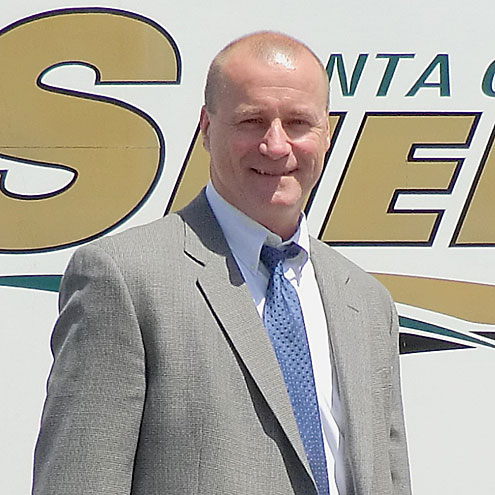Meeting and Briefing on Implementation of 21st Century Policing

Sheriff Hart said, “I am honored to represent the Santa Cruz County Sheriff’s Office in Washington DC this week and meet with White House staff and other law enforcement leaders who are working towards building their organizations around the principles of 21st Century Policing. My staff and a number of community members have worked hard for the last six months on our 21st Century Policing implementation plan and we have put many great ideas into action.”
The Sheriff’s Office Task Force on 21st Century Policing is nearly finished with their work and will be giving a report to the community on August 17 to inform the public on their recommendations. The meeting will be held in the Community Room at Sheriff’s Office Headquarters, located at 5200 Soquel Avenue, Santa Cruz.
— Prepared by: Sergeant Roy A. Morales
Times Publishing asked Sheriff Hart the following questions about the Policing Initiative:

- How does it affect our (citizen’s) privacy rights?
- What involvement do residents have in the initiative?
Here are Sheriff Hart’s answers:
Answer #1 The 21st Century Policing initiative is a set of 6 pillars and 79 recommendations for law enforcement that came from a group commissioned by the President. Charles Ramsey, who is the former Philadelphia and Washington DC police commissioner, was the co-chair of the committee that worked on the report that came out of the White House.
The report focuses on police departments and sheriffs Offices building trust and legitimacy with the communities they serve. We were already doing some of the action items the report recommends. Because of the initiative we have made a large number of adjustments and changes based on our internal review of our own policies/procedures. I believe we have provided very good law enforcement services over the years, but I think using the principles in this initiative we will do an even better job.
Some of the changes are:
- Soliciting input on policies from community groups.
- Tracking demographic data on all car stops, bicycle stops and pedestrian stops.
- Providing business cards to people we stop who are not cited or arrested.
- Inviting the public to attend monthly training that we give to our deputy sheriffs.
- Management review of all use of force cases.
- Peer review on certain cases.
- Purchase of body-worn cameras for all uniformed staff.
- Increased training for all patrol deputies on working with people with mental illness.
- Increased social media presence on Facebook, Twitter and Instagram.
- Increased recruitment of minorities in Corrections and Operations.
- Focused training on least harm and de-escalation principles.
- Added a school resource officer to San Lorenzo Valley High School.
- Increased staffing for the Sheriff’s Activity League that services over 800 children countywide.
- Mandated all uniformed staff wear body armor.
- Established Summer in the Park program to connect with community and keep parks safe.
Answer #2 There are not any privacy issues with the steps we have taken.
Answer #3 Twenty community members helped craft our response over a six-month period. We also received input from the Public Defender’s Office, the District Attorney’s Office, the Deputy Sheriff’s Association, the ACLU and the NAACP on our body worn camera policy.
•••
The recommendations in the President’s report and our responses can be found at www.21stcenturypolicing.us
Times Publishing thanks Sheriff Hart for his timely and in-depth response.


